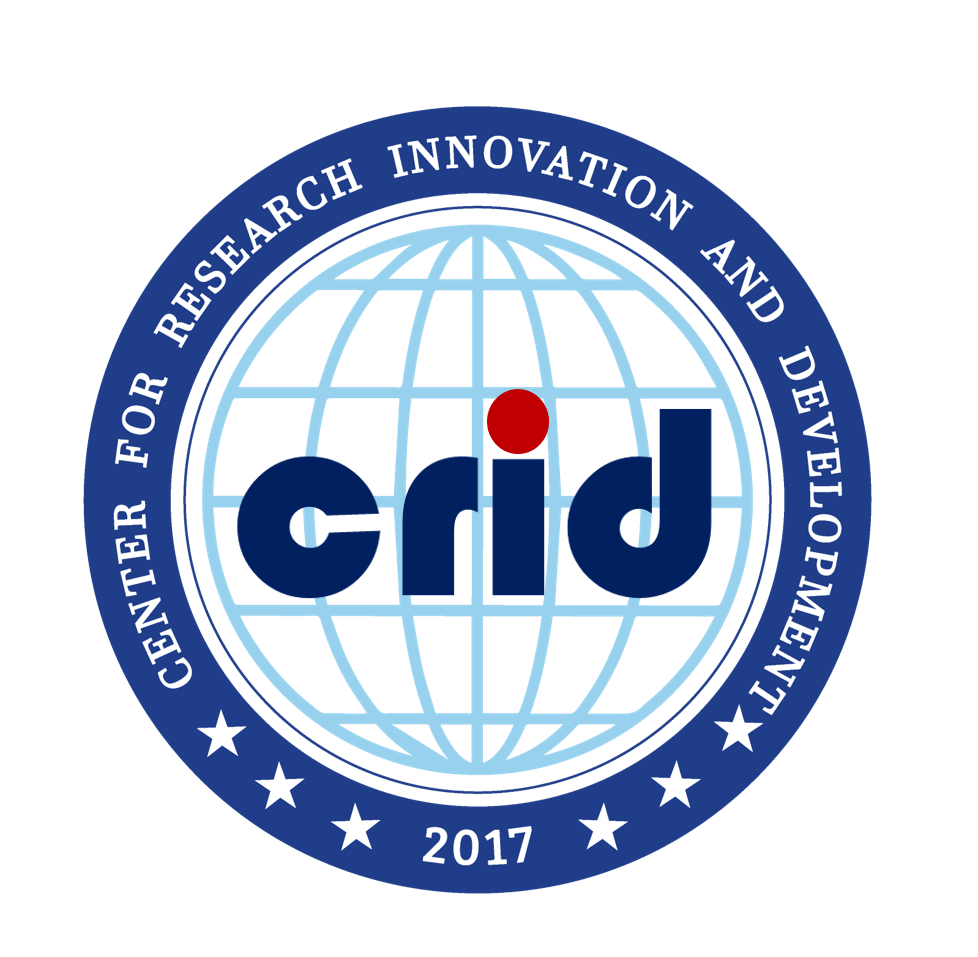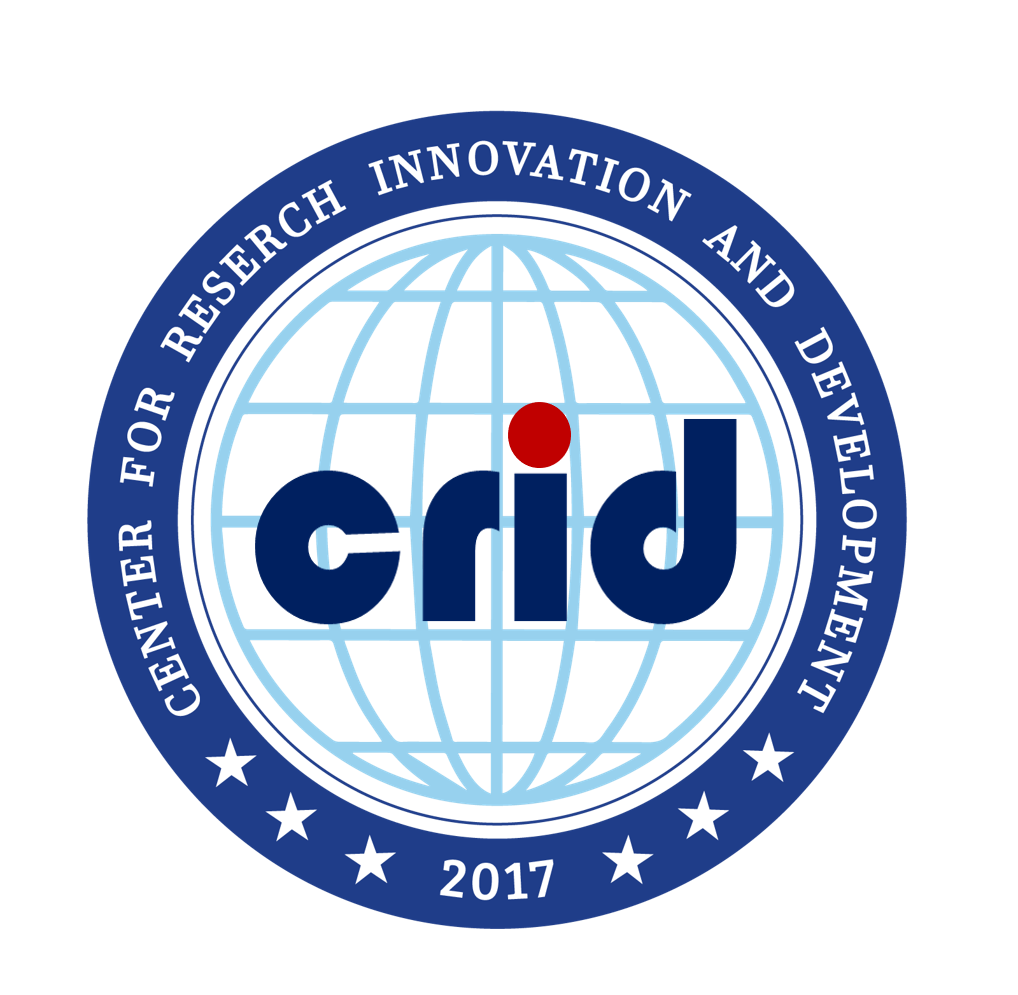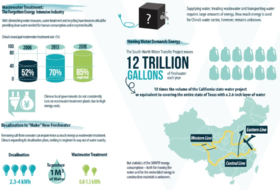Background

Water, energy, and food resources are interconnected and interdependent, forming a nexus that is critical to sustainable development. China, as the world’s largest developing country, faces significant challenges in managing this nexus, including resource scarcity, environmental degradation, and climate change. To address these challenges, the Chinese government has prioritized green development, which aims to achieve economic growth while protecting the environment and improving people’s well-being.
The water-energy-food nexus is central to this agenda, as it involves the three most basic and essential resources for human survival and development. Therefore, a coordinated and integrated approach is needed to manage this nexus and promote green development in China. This paper presents a conceptual framework for understanding the water-energy-food nexus and its relationship to green development in China and proposes a coordinated development model and strategic framework for achieving sustainable and green development goals. The paper also identifies key challenges and opportunities for implementing this approach and provides policy implications and recommendations for promoting the water-energy-food nexus in China’s green development agenda.
Conceptual Framework: Water-Energy-Food Nexus and Green Development
The water-energy-food nexus and green development are interconnected concepts that have gained attention in recent years. The water-energy-food nexus refers to the interdependence of water, energy, and food resources, and the need to manage them in an integrated way to achieve sustainable development. Green development, on the other hand, refers to development that is environmentally friendly, socially responsible, and economically viable.
The conceptual framework of the water-energy-food nexus and green development in China involves the following key elements:
- Water, energy, and food are interdependent and interconnected resources. The production and consumption of one resource affect the other two, creating trade-offs and synergies.
- The nexus approach to managing water, energy, and food resources aims to achieve sustainable development. This includes balancing economic, social, and environmental objectives, and ensuring the long-term availability and accessibility of resources.
- Effective governance is essential for the water-energy-food nexus approach to work. This involves coordination and collaboration between different sectors, stakeholders, and levels of government.
- Green development requires innovative solutions to address the challenges posed by the water-energy-food nexus. This includes the development and deployment of green technologies, as well as the promotion of circular economy approaches.
- The nexus approach recognizes the interdependencies among the water, energy, and food sectors, which are often managed in isolation. The nexus approach aims to promote integrated management of these sectors to achieve sustainable development goals.
- The concept of green development involves balancing economic growth with environmental protection and social equity. It promotes resource efficiency, pollution prevention, and sustainable consumption and production.
- The United Nations Sustainable Development Goals provide a framework for achieving sustainable development. The SDGs cover a range of issues, including poverty reduction, climate action, and sustainable consumption and production.
- Effective policy and governance frameworks are essential for promoting the water-energy-food nexus and green development in China. This includes policies that promote integrated planning and management of resources, and effective governance mechanisms to ensure accountability and transparency.
- The nexus approach recognizes the interdependencies among the water, energy, and food sectors, which are often managed in isolation. The nexus approach aims to promote integrated management of these sectors to achieve sustainable development goals.
- The concept of green development involves balancing economic growth with environmental protection and social equity. It promotes resource efficiency, pollution prevention, and sustainable consumption and production.
- The United Nations Sustainable Development Goals provide a framework for achieving sustainable development. The SDGs cover a range of issues, including poverty reduction, climate action, and sustainable consumption and production.
- Effective policy and governance frameworks are essential for promoting the water-energy-food nexus and green development in China. This includes policies that promote integrated planning and management of resources, and effective governance mechanisms to ensure accountability and transparency.
China is facing significant water and food security challenges due to a growing population, urbanization, and climate change. These challenges require an integrated approach to managing water, energy, and food resources that balance economic growth with environmental and social sustainability. The water-energy-food nexus and green development offer a framework for achieving this balance.
Coordinated Development Model of the Water-Energy-Food Nexus
The coordinated development model of the water-energy-food nexus in China is a complex system that requires multi-disciplinary approaches and strategies. The coordinated development model is an important tool for promoting sustainable development in China. It provides a strategic framework for addressing the challenges and opportunities of the water-energy-food nexus in the context of China’s green development agenda. By adopting a coordinated and integrated approach to the management of water, energy, and food resources, China can achieve its green development goals while ensuring the sustainable use of its natural resources. The model aims to achieve sustainable development by integrating the three sectors of water, energy, and food in a way that maximizes resource efficiency and minimizes negative environmental impacts.
To achieve this coordinated development, several strategies and policies have been put in place. For example, the Chinese government has implemented water conservation policies that encourage the use of water-efficient technologies and practices in agriculture. Additionally, policies have been put in place to encourage renewable energy development, such as solar and wind power, which can reduce the dependence on fossil fuels and promote a more sustainable energy system. The Chinese government has also established various institutions to oversee the implementation of these policies and ensure effective coordination among relevant agencies. For example, the National Development and Reform Commission (NDRC) is responsible for setting and implementing energy and climate policies, while the Ministry of Water Resources (MWR) is responsible for water management and conservation.
China has also implemented a number of policies and strategies, such as the Water Ten Plan, the Energy Development Strategy Action Plan (2014-2020), and the National Plan for Food Security (2016-2020). These policies aim to promote the efficient use of water, energy, and food resources, reduce environmental impacts, and promote sustainable development. One example of a successful coordinated development model in China is the South-to-North Water Diversion Project, which aims to transfer water from the Yangtze River basin to the arid northern regions of China. This project involved the construction of a series of canals and tunnels and required cooperation between multiple government agencies and local communities.
Despite these efforts, there are still several challenges that need to be addressed in order to achieve effective coordination and development in the water-energy-food nexus in China. One major challenge is the lack of data and information sharing among different sectors and institutions, which can hinder effective decision-making and coordination. Another challenge is the competing demands for resources among different sectors, such as agriculture, industry, and urban areas, which can lead to conflicts and inefficiencies. Limited data and information sharing between stakeholders, conflicting policies and regulations, and inadequate funding and technology transfer are also some important challenges. To overcome these challenges, China could consider strengthening data and information-sharing mechanisms, developing more comprehensive and integrated policies and regulations, and increasing investment in research and development of green technologies. Additionally, public participation and community engagement should be prioritized to ensure that the needs and concerns of local communities are taken into account in the planning and implementation of water-energy-food projects.
There are also several opportunities for further development and improvement in the water-energy-food nexus in China. For example, advancements in technology, such as smart grids and precision agriculture, can help improve resource efficiency and reduce negative environmental impacts. Additionally, international cooperation and partnerships can help China learn from other countries experiences and best practices in managing the water-energy-food nexus.
Strategic Framework for Green Development of the Water-Energy-Food Nexus
The Strategic Framework for Green Development of the Water-Energy-Food Nexus in China aims to promote sustainable development by balancing economic growth, social welfare, and environmental protection;
- The framework proposes the optimization of resource allocation across the water, energy, and food sectors. This involves promoting the efficient use of resources and reducing waste and pollution. For example, China’s water efficiency increased by 11.2% from 2011 to 2019, and its energy intensity decreased by 19.1% over the same period (National Bureau of Statistics of China, 2020).
- The framework highlights the importance of developing innovative technologies to support sustainable development. This includes promoting renewable energy and developing water-saving and energy-saving technologies. For example, China has become the world’s leading investor in renewable energy, with a total investment of US$758 billion from 2010 to 2019 (International Renewable Energy Agency, 2020).
- The framework emphasizes the need for policy and institutional reform to support sustainable development. This includes improving the legal framework and strengthening institutional capacity for water-energy-food nexus management. For example, China has established the National Energy Administration and the National Food and Strategic Reserves Administration to oversee the energy and food sectors, respectively (National Development and Reform Commission, 2018).
- The framework calls for international cooperation to promote sustainable development of the water-energy-food nexus. This includes sharing best practices and technologies and promoting cooperation on transboundary water and energy resources. For example, China has signed agreements with neighboring countries on transboundary water management, such as the Mekong River Agreement with Cambodia, Laos, Myanmar, Thailand, and Vietnam (Ministry of Water Resources of China, 2020).
- The Strategic Framework for Green Development of the Water-Energy-Food Nexus in China aims to promote sustainable development by balancing economic growth, social welfare, and environmental protection. The following are some of the details of the strategic framework, along with relevant data and references:
- The framework proposes the optimization of resource allocation across the water, energy, and food sectors. This involves promoting the efficient use of resources and reducing waste and pollution. For example, China’s water efficiency increased by 11.2% from 2011 to 2019, and its energy intensity decreased by 19.1% over the same period (National Bureau of Statistics of China, 2020).
- The framework highlights the importance of developing innovative technologies to support sustainable development. This includes promoting renewable energy and developing water-saving and energy-saving technologies. For example, China has become the world’s leading investor in renewable energy, with a total investment of US$758 billion from 2010 to 2019 (International Renewable Energy Agency, 2020).
- The framework emphasizes the need for policy and institutional reform to support sustainable development. This includes improving the legal framework and strengthening institutional capacity for water-energy-food nexus management. For example, China has established the National Energy Administration and the National Food and Strategic Reserves Administration to oversee the energy and food sectors, respectively (National Development and Reform Commission, 2018).
- The framework calls for international cooperation to promote sustainable development of the water-energy-food nexus. This includes sharing best practices and technologies and promoting cooperation on transboundary water and energy resources. For example, China has signed agreements with neighboring countries on transboundary water management, such as the Mekong River Agreement with Cambodia, Laos, Myanmar, Thailand, and Vietnam (Ministry of Water Resources of China, 2020).
Overall, the strategic framework for green development of the water-energy-food nexus in China highlights the importance of integrated management across sectors, innovative technology development, policy and institutional reform, and international cooperation. By adopting a holistic and sustainable approach, China can promote the balanced development of the water, energy, and food sectors, and contribute to global sustainable development goals.
Challenges and Opportunities
Challenges
- Climate change is a major challenge facing the water-energy-food nexus in China. Rising temperatures, changing precipitation patterns, and more frequent extreme weather events can have significant impacts on the availability and quality of water resources, as well as on energy and food production. Climate change mitigation and adaptation strategies are therefore essential for ensuring the sustainable development of the water-energy-food nexus in China.
- Water scarcity is a significant challenge in many regions of China, particularly in the arid and semi-arid areas of the north and northwest. The water resources available for the water-energy-food nexus are limited, and there is increasing competition between different sectors and users. Addressing water scarcity requires the development of water-efficient technologies, as well as policies and institutions that promote the efficient allocation and use of water resources.
- Energy security is a critical issue for China, which is the world’s largest energy consumer. The water-energy nexus is particularly important for China, as a significant proportion of the country’s energy comes from hydropower, thermal power, and nuclear power, which all depend on water resources. Ensuring energy security requires the development of renewable energy sources, such as wind and solar power, as well as improving energy efficiency.
- Food security is a significant challenge in China, which has the world’s largest population to feed. The water-energy nexus is critical for food production, as water is required for irrigation and energy is needed for food processing and transportation. Improving food security requires the development of sustainable agriculture practices, including water-efficient irrigation systems and the promotion of agroecological approaches to farming.
- The water-energy-food nexus is a complex system that involves multiple sectors and stakeholders, and it requires effective governance and institutions to ensure its sustainable development. In China, institutional and governance challenges include the lack of integrated policy frameworks, inadequate coordination between different sectors and levels of government, and insufficient participation of stakeholders in decision-making processes.
- China’s rapid urbanization has led to increased demand for water and energy, putting pressure on the water-energy-food nexus. The development of sustainable cities and the implementation of green infrastructure can help address these challenges.
- The water-energy-food nexus is a complex system that involves multiple sectors and stakeholders, making governance a critical challenge. Improving coordination and cooperation among different actors and promoting public participation in decision-making processes is essential for the effective management of the water-energy-food nexus.
- Limited institutional coordination and integration among the water, energy, and food sectors.
- Lack of understanding and awareness of the interconnectedness of the water-energy-food nexus.
- Water scarcity and water pollution, particularly in the northern and western regions of China.
- Energy insecurity and dependence on fossil fuels lead to greenhouse gas emissions and air pollution.
- Land degradation and soil erosion, affect food security and agricultural productivity.
- Inadequate technology and infrastructure for efficient water use, energy generation, and food production.
- Socio-economic disparities and uneven distribution of resources, exacerbate inequalities in the access to water, energy, and food.
- Climate change impacts, such as increased frequency and severity of droughts, floods, and extreme weather events.
Opportunities
- Integrated planning and management of the water-energy-food nexus, including the use of circular economy approaches, can enhance resource efficiency and promote sustainable development.
- The promotion of renewable energy sources, such as solar and wind power, can help reduce dependence on fossil fuels and mitigate greenhouse gas emissions.
- Investment in modern irrigation systems and water-saving technologies can increase agricultural productivity and conserve water resources.
- Implementation of soil conservation and restoration measures can enhance land productivity and food security.
- The introduction of sustainable farming practices, such as organic farming and agroforestry, can enhance soil fertility and biodiversity while reducing environmental impacts.
- The development of markets for water, energy, and food can provide incentives for efficient resource use and promote innovation in sustainable production and consumption.
- Enhancement of public awareness and education on the water-energy-food nexus can help build public support for sustainable development and conservation efforts.
- Collaboration among stakeholders, including government, private sector, civil society, and communities, can promote shared goals and enhance social inclusiveness and equity.
Policy Implications and Recommendations
Based on the challenges and opportunities discussed earlier, the following policy implications and recommendations can be made for promoting the water-energy-food nexus in China’s green development agenda;
- Encourage inter-ministerial coordination and stakeholder participation to promote cross-sectoral collaboration and address the water-energy-food nexus in an integrated manner.
- Encourage the adoption of resource-efficient technologies and practices, such as wastewater treatment and reuse, energy-efficient technologies, and precision agriculture, to reduce resource consumption and improve resource productivity.
- Develop strategies to enhance water security, such as water conservation measures, water rights systems, and water pricing mechanisms, to ensure sustainable use of water resources.
- Increase the share of renewable energy in the energy mix to reduce dependence on fossil fuels and mitigate greenhouse gas emissions.
- Promote sustainable agriculture practices, such as agroforestry and organic farming, to reduce environmental impacts and enhance the resilience of the agricultural sector to climate change.
- Develop effective governance and institutional frameworks to support the implementation of the water-energy-food nexus approach, such as integrated water resources management and multi-stakeholder platforms.
- Strengthen international cooperation and knowledge-sharing to promote the water-energy-food nexus approach and facilitate the transfer of green technologies and practices.
- There is a need to establish a dedicated inter-ministerial committee for the water-energy-food nexus, which can help coordinate policies across different sectors and facilitate data sharing and collaboration between stakeholders.
- Policies should be developed that address the water-energy-food nexus in an integrated manner, rather than in silos. For example, energy policies should take into account water and food requirements, and vice versa.
- Greater public participation in decision-making processes related to the water-energy-food nexus can lead to more effective and sustainable policies. This can be achieved through public consultations, awareness-raising campaigns, and the involvement of civil society organizations.
- Governments and financial institutions can encourage investment in green technologies and infrastructure by offering incentives and subsidies, and by establishing green financing mechanisms.
- Policies should be developed that promote sustainable agriculture practices, such as conservation agriculture and agroforestry, which can help reduce water and energy use, and increase food security.
- There is a need to promote the adoption of water-saving technologies, such as drip irrigation, precision farming, and drought-resistant crops, which can help reduce water use in agriculture.
- Governments and the private sector should invest in renewable energy sources, such as solar and wind power, which can help reduce greenhouse gas emissions and decrease the water and energy intensity of the economy.
- There is a need to improve water management practices, including water conservation, water reuse, and water allocation policies. This can help reduce water stress and increase the resilience of water systems to climate change.
- International cooperation can play an important role in promoting the water-energy-food nexus in China. Cooperation can take many forms, including technology transfer, knowledge-sharing, and joint research and development initiatives.
- Governments should establish monitoring and evaluation frameworks to track progress in implementing policies related to the water-energy-food nexus. This can help identify areas where progress is lagging and make adjustments to policies as needed.
Concluding Remarks
The water-energy-food nexus is a critical concept for sustainable development and green growth in China. The integrated management and development of water, energy, and food resources can enhance resource efficiency and security, reduce environmental impacts, and promote social and economic development. The coordinated development model and strategic framework presented in this paper provide a valuable guide for policymakers, practitioners, and researchers to address the challenges and opportunities in managing the water-energy-food nexus in China. To achieve the goals of green development, several policy implications and recommendations are suggested. These include;
- Developing and implementing comprehensive strategies and policies for the water-energy-food nexus that promote integrated planning, management, and governance across sectors and scales.
- Strengthening institutional capacity and improving governance arrangements for integrated water-energy-food management.
- Promoting research and innovation in green technologies, including renewable energy, smart agriculture, and water-saving technologies.
- Encouraging public-private partnerships and investment in green infrastructure and sustainable agriculture.
- The coordinated development of the water-energy-food nexus is essential for achieving sustainable development goals and addressing the challenges of climate change, environmental degradation, and resource scarcity in China.
- Increasing public awareness and participation in the water-energy-food nexus and promoting sustainable consumption and lifestyles.
The water-energy-food nexus provides a valuable framework for achieving green development in China. The Water-Energy-Food Coordinated Development Model and Strategic Framework Under Green Development in China represents a promising approach for promoting sustainable development, environmental protection, and economic growth in China while addressing the challenges of the water-energy-food nexus in a holistic and integrated manner. By promoting coordinated management and development of water, energy, and food resources, China can enhance resource efficiency and security, reduce environmental impacts, and promote social and economic development. The challenges and opportunities presented in this paper highlight the need for comprehensive strategies and policies, institutional capacity building, research and innovation, public-private partnerships, and public awareness and participation to achieve these goals.
Author:
Dr. Md Ekram Hossain
Research Faculty (Assistant Professor), Hohai University, China
Email: mdekram_hossain@hhu.edu.cn







